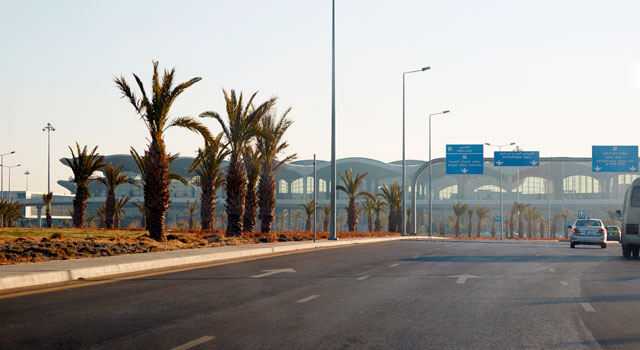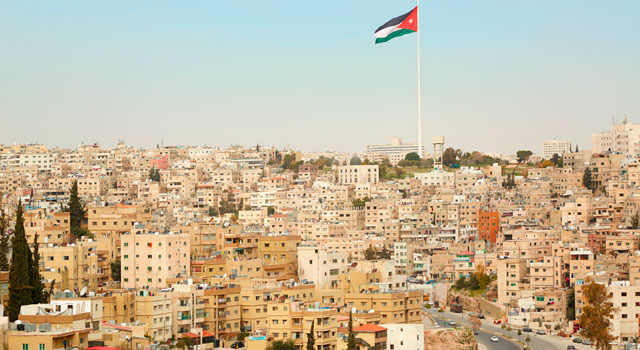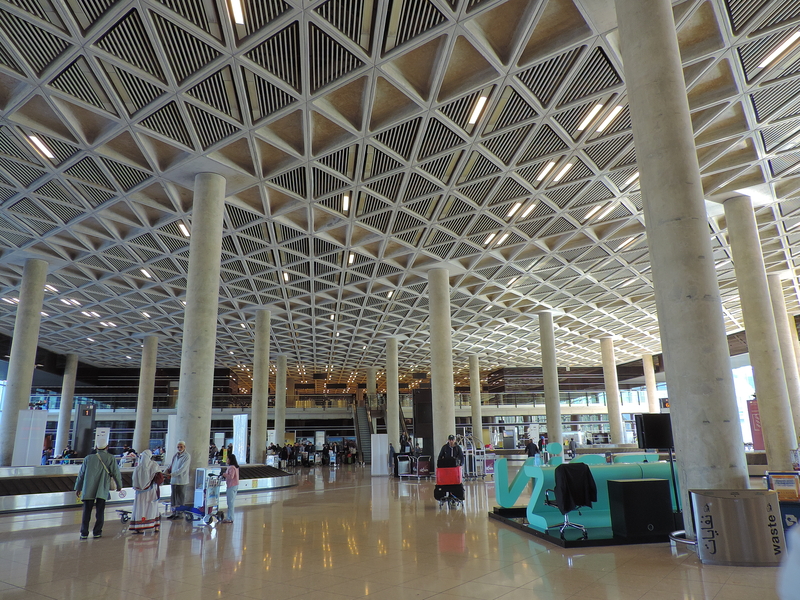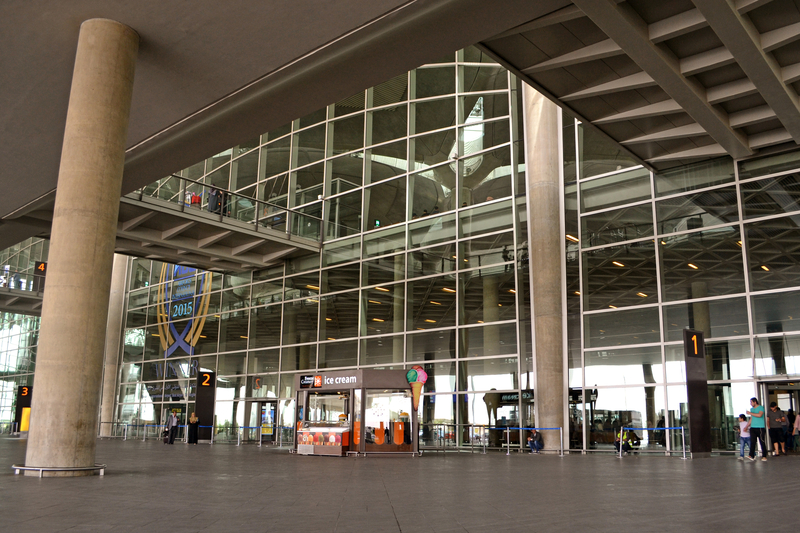Terminal +info
The terminal at Queen Alia International Airport in Amman, inaugurated in 2013, features a modern design inspired by Bedouin tents, with a distinctive roof of concrete domes. It is glazed on all sides, offering natural light and views of the runways.
The terminal includes spacious areas for shops, lounges, restaurants, and gardens, reflecting local culture and hospitality.
Reviews +info
On this website, you will find valuable tips and reviews about Queen Alia International Airport designed to help you navigate your travel experience smoothly. These reviews can help you understand what to expect in terms of service quality, cleanliness, and overall passenger experience.
-Our Review of Amman Airport
-Pros and Cons of AMM Airport
-Mini-Guide of the Airport (2’ Guide)
-Other reviews
-Some Stats
Transportation +info
There are currently three options regarding transportation at AMM Airport:
Bus: Sariyah Airport Express Bus runs to Amman every 30-60 minutes 24 hours/day.
Taxi: Taxis at Amman Airport work with fixed and public rates. Get within 40 minutes to downtown Amman by taxi.
Car Rental: At Amman Airport you can find several car rental services. Now, you can book your car through our search engine.
Contact
Address:
Alpha Building, 2nd Floor,
39052, Amman 11104
JORDAN
Phone: +962 6 500 2777
Email: contactus@aig.aero
QAIA Airport in numbers
- One terminal expanded in 2016 with a total capacity of 12 million passengers.
- Hub for 2 airlines: Royal Jordanian Airlines and Jordan Aviation.
- 2 runways.
- More than 40 airlines (passenger, charter and cargo).
- 6,000 square metres of retail space.
About Amman
Discover Amman: Jordan’s Vibrant Capital
Amman, the capital and largest city of Jordan, stands as the fifth-largest city in the Arab world and serves as the nation’s economic, political, and cultural hub. With a population of over four million, Amman is renowned for its modern infrastructure, cosmopolitan atmosphere, and its reputation as one of the most liberal and westernized cities in the region1. The city’s dynamic blend of ancient history and contemporary lifestyle makes it a major tourist destination in the Middle East.
Historical and Cultural Attractions
Amman’s rich history is visible in its impressive archaeological sites. The Amman Citadel, perched atop Jabal Al Qala’a, features ruins from the Bronze Age, Roman, Byzantine, and Umayyad periods, including the Temple of Hercules and the Umayyad Palace. The Roman Theater, a remarkably preserved 2nd-century amphitheater, continues to host cultural events and offers insight into the city’s ancient past.
Museums are a highlight for visitors. The Jordan Museum showcases treasures such as the Dead Sea Scrolls and Neolithic limestone statues, while the Jordan Archaeological Museum and Jordan Folklore Museum provide deeper understanding of the region’s heritage. Unique spots like the Old Signs Museum and Duke’s Diwan offer quirky glimpses into Amman’s evolving identity.
Modern Lifestyle and Entertainment
Amman’s urban landscape is characterized by a vibrant mix of shopping malls, nightclubs, restaurants, shisha lounges, and music bars, reflecting its modern and youthful spirit1. The city’s neighborhoods, such as Jebel Al Lwebdeh and Rainbow Street, are known for their lively cafés, art galleries, and independent boutiques. The local culture is a tapestry of Bedouin traditions and influences from Palestinian, Syrian, Iraqi, and other communities, creating a diverse culinary and artistic scene.
Amman’s arts and culture scene is flourishing, with regular art exhibitions, music festivals, and cultural events that attract both locals and international visitors. The city’s renowned hospitality, rooted in Bedouin traditions, ensures that every visitor feels welcome and immersed in Jordanian warmth.



